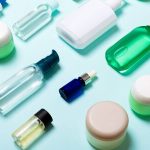1. Keep Your Skin Hydrated
After any cosmetic treatment—whether its laser therapy, microneedling, or a chemical peel—keeping your skin hydrated is one of the most important steps in your recovery journey. Proper hydration not only helps soothe the skin but also supports its natural healing process. When your skin is well-moisturized, it can repair itself more effectively and reduce the risk of dryness, irritation, and flakiness.
Choose the Right Moisturizer
Opt for a gentle, fragrance-free moisturizer. Fragrances and harsh chemicals can irritate freshly treated skin, potentially leading to redness or delayed healing. Look for products labeled “non-comedogenic” (won’t clog pores) and those that contain calming ingredients like hyaluronic acid, ceramides, or aloe vera.
Helpful Ingredients to Look For
| Ingredient | Benefit |
|---|---|
| Hyaluronic Acid | Binds moisture to the skin for long-lasting hydration |
| Ceramides | Strengthen the skin’s barrier to lock in moisture |
| Aloe Vera | Soothes irritation and reduces inflammation |
| Squalane | Mimics natural skin oils for deep hydration without greasiness |
How Often Should You Moisturize?
You should moisturize at least twice daily—once in the morning and once before bed. If your skin feels especially dry or tight during the day, it’s okay to reapply as needed. Just make sure your hands are clean and avoid over-rubbing sensitive areas.
Pro Tip:
If your provider recommends a specific product after treatment, follow their guidance closely. Post-treatment skincare often works best when paired with professional advice tailored to your unique skin type and procedure.
2. Avoid Sun Exposure
After any cosmetic treatment, your skin becomes more sensitive and vulnerable to damage, especially from the sun’s UV rays. Protecting your treated skin from direct sunlight is one of the most important steps you can take for a smooth recovery. Sun exposure not only slows down the healing process but can also lead to unwanted pigmentation, irritation, or even long-term damage.
Why Sun Protection Matters
Post-treatment skin is often inflamed or slightly wounded, which makes it more reactive to environmental stressors like ultraviolet (UV) radiation. Even short periods of sun exposure can cause complications such as redness, hyperpigmentation, or scarring.
Simple Ways to Stay Protected
The best way to protect your healing skin is by limiting time outdoors and using proper sun protection every day—even on cloudy days. Here are some easy-to-follow guidelines:
| Protection Method | Details |
|---|---|
| Use Sunscreen Daily | Apply a broad-spectrum sunscreen with SPF 30 or higher at least 15 minutes before going outside. Reapply every 2 hours if youre outdoors. |
| Avoid Peak Sun Hours | Try to stay indoors between 10 a.m. and 4 p.m., when UV rays are strongest. |
| Wear Protective Clothing | Opt for wide-brimmed hats, sunglasses, and lightweight long sleeves when you need to be outside. |
| Seek Shade | If you must go out, stay in shaded areas whenever possible—especially during peak sunlight hours. |
Sunscreen Tips
- Select a sunscreen labeled “broad-spectrum” to protect against both UVA and UVB rays.
- If your skin feels sensitive after treatment, choose mineral-based sunscreens with zinc oxide or titanium dioxide—they’re gentler on healing skin.
- Avoid heavily fragranced products that may irritate sensitive skin post-procedure.
Your skin is doing its best to heal—help it along by keeping it safe from the sun. Consistent sun protection not only speeds up recovery but also helps you maintain the results of your treatment longer.

3. Follow Your Provider’s Aftercare Instructions
One of the most important steps in your post-treatment skin care routine is to follow the aftercare instructions given by your provider. These guidelines are tailored to your specific treatment and skin type, helping you heal properly while minimizing risks like infection, irritation, or scarring.
Why Following Instructions Matters
Your provider has extensive experience and knows how your skin should react after a procedure. Ignoring their advice or skipping steps may delay healing or even affect your final results. For example, using the wrong skincare products too soon can trigger breakouts or cause discomfort.
Common Aftercare Instructions You Might Receive
| Instruction | Purpose |
|---|---|
| Avoid direct sun exposure | Prevents pigmentation and helps skin heal evenly |
| Use gentle cleansers | Reduces irritation and keeps treated area clean |
| Apply prescribed ointments or creams | Promotes healing and prevents infection |
| Skip makeup for a few days | Allows skin to breathe and reduces clogging of pores |
| Avoid strenuous exercise or sweating | Minimizes risk of bacteria entering open pores |
When to Contact Your Provider
If you notice unusual symptoms like prolonged redness, swelling, pus, or pain beyond what was explained, reach out to your practitioner right away. Early intervention can prevent more serious issues.
Pro Tip:
Take a photo of your aftercare sheet or save it on your phone so you can easily refer back to it. Keeping track ensures youre not missing any steps during recovery.
4. Skip Harsh Skincare Products
After any cosmetic treatment—whether its a laser session, microneedling, or chemical peel—your skin needs time to heal and recover. During this sensitive period, using the wrong skincare products can do more harm than good. Its important to hit pause on certain ingredients that might normally be part of your routine.
What to Avoid Right After Treatment
Your skin barrier is temporarily weakened after a procedure, making it more vulnerable to irritation and inflammation. To protect your healing skin, avoid the following:
| Product Type | Why It’s Harmful Post-Treatment |
|---|---|
| Exfoliants (physical or chemical) | Can cause microtears or worsen redness and sensitivity |
| Retinoids (Retinol, Tretinoin) | Might increase dryness, peeling, and irritation |
| Alcohol-based toners or cleansers | Can strip moisture and lead to stinging or burning sensations |
When Can You Resume Using These Products?
This depends on the specific treatment you had and how your skin responds during recovery. Generally, most professionals recommend waiting at least 7–10 days before reintroducing active ingredients like retinoids or exfoliants. Always follow your providers guidance.
Pro Tip:
If youre unsure whether a product is too harsh post-treatment, opt for fragrance-free, hydrating formulas labeled as “gentle” or “for sensitive skin.” When in doubt, less is more.
5. Be Gentle with Your Skin
After a cosmetic treatment, your skin is in a sensitive and healing state. It’s crucial to handle it with extra care to avoid irritation, scarring, or prolonging the recovery process. One of the most important rules? Refrain from picking, scratching, or rubbing the treated area. Even if the skin feels itchy or dry as it heals, resist the urge—these actions can lead to long-term damage like hyperpigmentation or scarring.
Here are a few gentle care tips to follow:
| Do | Dont |
|---|---|
| Pat your skin dry with a soft towel | Rub your face with rough towels or cloths |
| Apply recommended healing ointments gently | Use harsh exfoliants or scrubs |
| Use clean hands when touching your face | Pick at scabs or peeling skin |
If you experience flaking, dryness, or minor scabbing, let your skin heal naturally. These are normal parts of the recovery process and usually resolve on their own. Being patient and gentle will help ensure that your results look smooth and natural once fully healed.


